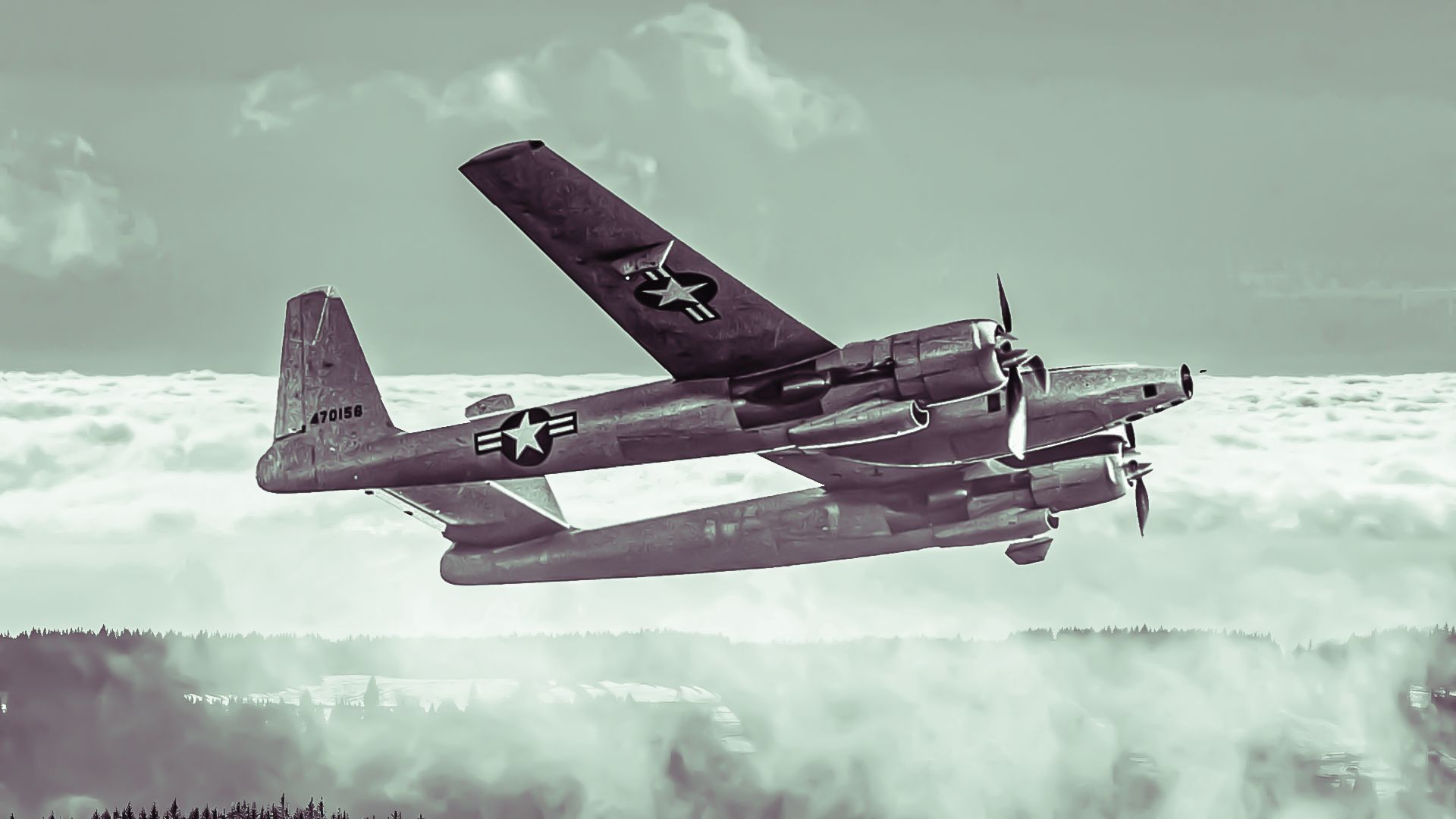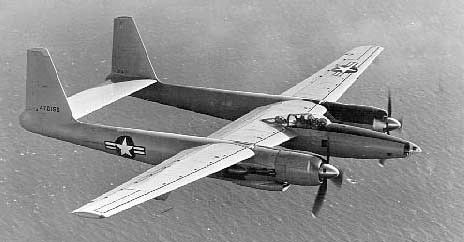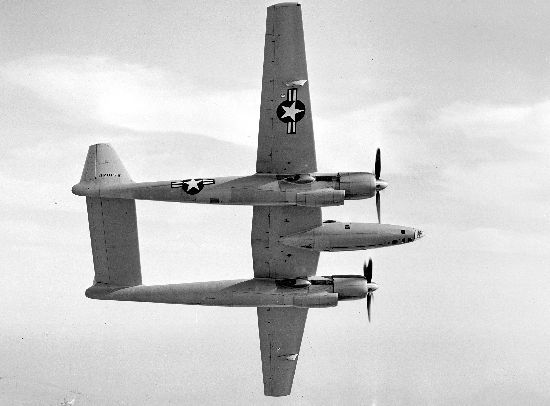Summary
- The Hughes XF-11 was a failed military reconnaissance aircraft designed by Howard Hughes in 1943.
- The crash was caused by pilot error – Hughes did not follow flight test plans and stayed airborne too long.
- After surviving the accident, Hughes flew the second prototype only for testing purposes before it was scrapped in 1949.
Howard Hughes, the famous aviator, was to test a new prototype aircraft, that he’d won a military contract for. Things didn’t quite go to plan and he almost died in the crash. Let’s find out more about the accident and how it occurred.
A little background
The Hughes XF-11 prototype aircraft was designed by Howard Hughes, Stanley Bell and Ed West. It was a military reconnaissance aircraft built by the Hughes Aircraft Company for the United States Army Air Force (USAAF). Originally, 100 were ordered in 1943, but the aircraft was delayed beyond World War II and became surplus to requirements. Only two prototypes had been built before the first test flight in 1946.
About the aircraft
The XF-11 was intended to be a fast, long-range and high-altitude photo reconnaissance aircraft. It was a modified version of the Hughes D-2, a fighter bomber designed by Howard Hughes. The D-2 lacked maneuverability and load carrying capacity. Therefore, in order to win the contract, he proposed the XF-11. It was designed to carry one pilot and a navigator/photographer. It notably had contra-rotating propellers and supercharged Pratt and Whitney R-4360-31 engines with 2,550 horsepower. The XF-11 could reach a speed of 450 miles per hour and had a range of 5,000 miles. It could fly up to 44,000 feet.
Aircraft Specifications
(Data from Jane’s all the world’s aircraft 1947)
General characteristics
- Crew: 2. (pilot and navigator/photographer)
- Length: 65 ft 3 in (19.9 m)
- Wingspan: 101 ft 5 in (30.9 m)
- Wing area: 983 sq ft (91.3 m2)
- Empty weight: 37,100 lb (16,828 kg)
- Gross weight: 47,500 lb (21,546 kg) (4,000 mi (3,500 nmi; 6,400 km) range)
- Max takeoff weight: 58,315 lb (26,451 kg) (5,000 mi (4,300 nmi; 8,000 km) range)
- Powerplant: 2 × Pratt & Whitney R-4360-31Wasp Major 28-cyl. air-cooled radial piston engines, 3,000 hp (2,200 kW) each
- Propellers: 8-bladed Hamilton Standard Hydromatic contra-rotating propellers
Performance
- Maximum speed: 450 mph (720 km/h, 390 kn) at 33,000 ft (10,000 m); 295 mph (256 kn; 475 km/h) at sea level
- Service ceiling: 42,000 ft (13,000 m)
- Rate of climb: 1,000 ft/min (5.1 m/s)
- Time to altitude: 33,000 ft (10,000 m) in 17.4 minutes
- Wing loading: 59.3 lb/sq ft (290 kg/m2) (5,000 mi (4,300 nmi; 8,000 km) range)
On the day of the test flight It was July 7, 1946. The XF-11 was to be tested by Howard Hughes himself and flown from the Hughes Aircraft Company private airfield at Culver City, California. It was to be a 45-minute flight with the landing gear extended, rules set for the tests by the USAAF. Hughes, however, did not follow the agreed protocol. He ordered 1,200 gallons of fuel to be loaded, instead of 600 gallons as stipulated by the USAAF. This hinted that he planned to prolong the flight.
After pre-flight engine tests, it was found that the right propeller had to be constantly refilled with hydraulic fluid. However, all the systems seemed to be working correctly and there was no leak observed, so Hughes proceeded with the flight. On take-off, he retracted the landing gear, against protocol. Lights in the cockpit showed that the landing gear did not retract as it should, which distracted him.
What happened next?
Hughes repeatedly lowered and retracted the landing gear and requested their test pilot fly alongside the XF-11 to observe. The A-20 Havoc could not communicate with Hughes due to a mix-up with the radio frequencies, but they could not see anything wrong and flew back to the airfield. Hughes continued to fly in circles over the city.
Now, over one hour and 15 minutes into the flight, almost twice the time set by the USAAF, a leak caused the right propeller to not function effectively. The rear propeller reversed in pitch and disrupted the engine’s thrust, causing the XF-11 to yaw to the right and descend steeply. The aircraft was 3.2 kilometers away from the airfield at 5,000 feet, but instead of returning to land he decided to fly away and try and troubleshoot the issue. The area was heavily populated and residential.
He believed that the landing gear or part of the right wing was causing the severe drag. The landing gear was raised and lowered again and Hughes adjusted the flight control surfaces. He left the right engine at full power and reduced power in the left engine, but the aircraft was still descending. He decided to make an emergency landing on a nearby golf course.
The aftermath
At 19:20, the aircraft lost altitude fast and clipped two houses on North Whittier Drive before slicing a third house with its wing and igniting a fire. The house and aircraft were destroyed by the impact and subsequent fire. Marine Sgt. William Lloyd Durkin and Captain James Guston had been watching the aircraft from the ground and witnessed the crash. They pulled Hughes out of the aircraft, saving his life. Hughes was taken to Beverly Hills Emergency Hospital and was treated for burns, a crushed collarbone, broken ribs and a collapsed lung. He was given a 50/50 chance of survival.
The investigation
USAAF investigators into the crash concluded:
“It appeared that loss of hydraulic fluid caused failure of the pitch change mechanism of right rear propeller. Mr. Hughes maintained full power of right engine and reduced that of left engine instead of trying to fly with right propeller windmilling without power. It was Wright Field’s understanding that the crash was attributed to pilot error.”
The safety board said that Hughes had not followed the flight test plan, had stayed airborne too long and deviated from protocol. They determined the cause as pilot error. Howard Hughes did recover from the accident and flew again eight months later. He flew the second XF-11 prototype the following year, in 1947. It was only flown for testing purposes and was scrapped in 1949. The USAAF contract was canceled in favor of the Northrop F15 and the Boeing RB-50 Super Fortress.



